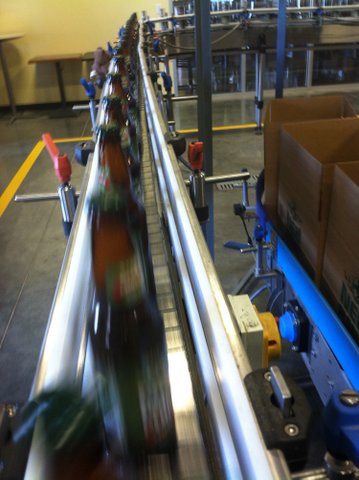Craft beer brewers and drinkers alike are typically obsessed with what ingredients are in their favorite beers. What kind of hops? What kind of malt? This one was brewed with pumpkin. That one was brewed with spices. Determining what is in a beer is also important for those brewers and drinkers who are gluten free. As gluten free becomes more visible in all food aspects, Pedro Gonzalez, founder of New Planet Beer Co., was quick to point out that in the brewing industry there are two categories of gluten-aware beers — gluten free and gluten reduced, and that is a huge difference to highlight.
“I’m very supportive of a beer that is reduced gluten, as long as it’s in accordance with the TTB label requirements. You’re supposed to say that the beer is crafted to reduce gluten, that the beer does contain gluten and that the tests that are now available are not reliable enough to measure the impact of the gluten. If somebody does that, I want to compete with them because that’s a fair practice.” — Pedro Gonzalez, founder of New Planet Beer Co.Obviously, beers brewed with malted barley or wheat contain gluten. To produce a gluten-free beer, like New Planet does, the process starts with sourcing ingredients that are 100-percent gluten free. Brewers are also able to produce a reduced-gluten beer using enzymes that hydrolyzes (breaks up) the gluten protein. And that’s when the gluten facts can get murky.
“The ELISA test does not detect a hydrolyzed protein in a reduced-gluten beer in the same way it would be recorded if it was not hydrolyzed or chopped up,” Gonzalezs explained. “It’s a gluten protein that gets chopped up, which doesn’t get recorded by the ELISA test in the same way it would be recorded if it was not chopped up. However, people are still ingesting that gluten protein, but in a different form. We know anecdotally from our Facebook interactions and other blogs that people are getting reactions to reduced-gluten beers. We also know that some people are not having reactions. Nobody knows if they’re going to get a reaction or not and nobody knows if there is it’s a cumulative factor. Sure, I can drink one beer and get away with it, but if I drink a second beer, I’ll have a cumulative factor reaction. We’re on the sidelines on the reduced-gluten issue watching the tests and what consumers are saying about it.”
Everyone reacts to gluten differently. Gonzalez wasn’t interested in drawing gluten battle lines. New Planet is more focused on process transparency. Gonzalez explained that he wants the consumer to be protected and clearly told if gluten was used in the brewing process, and he’s not the only one.
In May 2012, the U.S. Department of the Treasury’s Alcohol and Tobacco Tax & Trade Bureau (TTB) issued TTB Ruling 2012-2 that established labeling and advertising guidelines for gluten-free beers. The TTB rule stipulates that:
1. “The TTB will allow use of the statement ‘processed or treated or crafted to remove gluten,’ together with a qualifying statement to inform consumers that the product was made from a grain that contains gluten.”
2. “The statement must stipulate that ‘there is currently no valid test to verify the gluten content of the fermented product,’ and ‘That the finished product may contain gluten.’”
3. “The TTB believes that the qualifying statement is necessary to avoid misleading consumers about the gluten content of these products because of the serious health consequences associated with the consumption of gluten by individuals with celiac disease.”
Interestingly, the TTB referred to an August 3, 2011, notice from the Food and Drug Administration (FDA) that stated:
“FDA recognizes that for some food matrices [e.g., fermented or hydrolyzed foods], there are no currently available validated methods that can be used to accurately determine if these foods contain [less than] 20 ppm gluten. In such cases, FDA is considering whether to require manufacturers of such foods to have a scientifically valid method that will reliably and consistently detect gluten at 20 ppm or less before including a ‘gluten-free’ claim in the labeling of their foods.”

On its website, the FDA states:
“Currently, there is no Federal regulation that defines the term ‘gluten free’ used in the labeling of foods. Based upon comments FDA received during its public meeting on ‘gluten-free’ food labeling held in August 2005 and other information available to the Agency, there is no universal understanding among U.S. food manufacturers or consumers about the meaning of a food labeled as ‘gluten free.’ FDA believes that establishing a definition for the term ‘gluten free’ and uniform conditions for its use in the labeling of foods will ensure that persons with celiac disease are not misled and are provided with truthful and accurate information.”
“Truthful and accurate” are the key terms, especially for Gonzalez.
“I’m very passionate about providing the consumer who is really looking for a gluten-free beer, a product that is gluten free and has a gluten-free label. I’m very supportive of a beer that is reduced-gluten, as long as it’s in accordance with the TTB label requirements,” he said. “You’re supposed to say that the beer is crafted to reduce gluten, that the beer does contain gluten and that the tests that are now available are not reliable enough to measure the impact of the gluten. If somebody does that, I want to compete with them because that’s a fair practice. The consumer then has the educated opportunity. They could say that ‘I’m going to try this product because it’s cheaper. I like the packaging. I know it contains gluten, but I’m going to give it a try.’ I’m all for that. What I’m not all for is unscrupulous labeling where you don’t put in the label what is really in the bottle.
“The reason I’m so passionate about it is because this is my experience — there are a lot of compromises that somebody else is willing to make with someone else’s health.”





[…] means made without wheat, barley, malt, and other cross-contaminated grains. Gluten-reduced means the product was originally made with gluten ingredients but modified to contain fewer than 20 PPM […]